From Cinema Scope #20 (Autumn 2004). — J.R.

One of the most flagrant lacks in most jazz films is the spectacle of musicians listening to each another. Back in the early 60s, when I was frequenting a lot of downtown Manhattan jazz clubs, some of my biggest thrills came from visiting spots where many of the best and most attentive listeners were those on the bandstand —- not only the classic John Coltrane Quartet at the now defunct Half Note, where McCoy Tyner, Jimmy Garrison, Elvin Jones, and the serene leader were all meditating on one another’s solos in a kind of trance, but Lennie Tristano at the same club taping his own sets with Warne Marsh and Lee Konitz and then playing them back in the wee hours, while he sat alone at the bar. Sitting a few seats away from him one night, I felt I was getting an education in listening by observing this prodigious blind pianist’s highly physical responses, both positive and negative, to his own solos.

No less precious was the opportunity to attend the Jazz Gallery on St. Mark’s Place one weeknight when Miles Davis, Coltrane, Cannonball Adderley, J.J. Johnson, Bill Evans, Paul Chambers, and Philly Joe Jones were all holding forth in alternation with Teddy Wilson’s trio for (I kid you not) the price of a one-dollar admission, at least for students. Read more
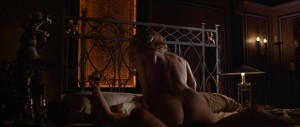
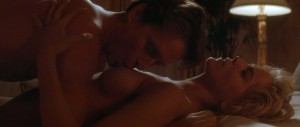
Reviewing Paul Verhoeven’s 1979 Dutch feature The 4th Man, Dave Kehr objected to conceptions of women as castrating harpies and of gays as predatory beasts that are insulting to all the sexualities involved. Working from a script by Joe Eszterhas, Verhoeven did an even better job of hammering home those notions 13 years later with Basic Instinct. I hated this movie when it was released, but on reflection I think that his appreciation of Sharon Stone as dominatrix/superwoman had a lot to do with what made her a star. Verhoeven also treats Michael Douglas, playing a gullible cop, with the kind of comic-book flourishes that might easily pass for derisiveness and sometimes come across as just plain hilarious. Despite (or maybe because of) his obligatory nods to Hitchcock, this is slick and entertaining enough to work as thriller porn, even with two contradictory denouements to its mystery (take your pick—or rather, ice pick). George Dzundza and Dorothy Malone are among the other actors along for the ride. R, 127 min. (JR)
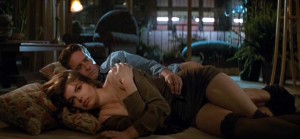
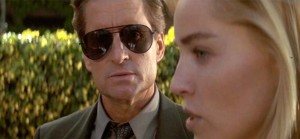 Read more
Read more
From the March 1, 2002 Chicago Reader. — J.R.

Leaner and meaner than usual, Maggie Cheung plays the dominatrixlike manager of an inn that caters to rowdy thieves during the Ming dynasty. The action editing in this 1992 Hong Kong comedy adventure can be as pleasurably incoherent as the subtitles (Don’t you scare of death? . . . I don’t give it a damn! . . . I can tell you are bad eggs from the first sight). Apart from the hyperbolic bloodletting in the final explosion of violence, in which one character is partially reduced to a skeleton, discontinuity reigns supreme as far as character, plot, and sometimes even gesture are concerned. (The stunt doubles probably deserve to share billing with the stars.) Cheung’s romantic rival for Tony Leung (the tall Tony Leung, not the one who costarred with her in In the Mood for Love) is her frequent cohort Lin Hsing-hsia. Raymond Lee directed this remake of a film by King Hu, and Tsui Hark produced. 90 min. (JR)
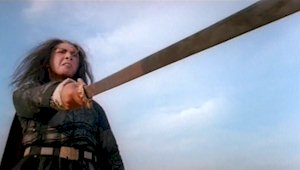
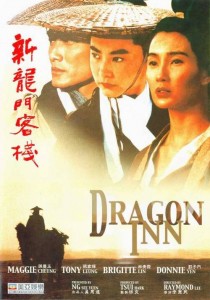 Read more
Read more
From the Chicago Reader (April 12, 2002). — J.R.

Like Yasujiro Ozu’s features with seasonal titles, Alexander Sokurov’s hallucinatory video elegies tend to be so similar, even in their running times, that they blur together in memory. Elegy of a Voyage (2001, 47 min.) — which might be more idiomatically titled Elegy for a Voyage — is a journey, a dream, a first-person narrative (visibly as well as audibly) that evokes the 19th century, and a hypnotic study in textures relating to fog, snow, and water that often entails a breakdown in the usual divisions between color and black and white (as well as fiction and documentary). It was commissioned by the Boijmans Van Beuningen Museum in Rotterdam, which asked Sokurov to look at a work of art in their collection “like a night watchman in a deserted museum.” By the time Sokurov creeps into the museum to reflect on Brueghel’s The Tower of Babel and seven other paintings, he seems to have trekked across substantial portions of his native Russia as well as the Helsinki harbor. I was less captivated by Laura Waddington’s minimalist video diary Cargo (2001, 29 min.), which uses many still and slow-motion shots and similarly fragmented narration to illustrate a trip she took from Venice to the Middle East on a freighter whose exploited crew was an international assortment of men without landing papers. Read more
From the Chicago Reader (April 2002). — J.R.

The whiff of amateur theatricals in The Phantom Menace, imparting a personalized clunkiness to the proceedings, is back in force in this aptly titled fifth installment, but this time the exposition is so thick that everyone except acolytes may tune out. Though the look aspires as usual to be both otherworldly and familiar, there’s nothing that doesn’t reek of southern California plastic, including the characters. Whatever showmanship director George Lucas brought to the earlier episodes has been paved over by calculation (Christopher Lee is about the only actor who looks comfortable). But Lucas is enough of a businessman to know that the earlier chapters helped foster the celebratory mood that greeted the previous gulf war (mainly by promoting the glee to be extracted from supposedly bloodless annihilation, delivered chiefly to faceless reptiles in desert settings), and the livelier final stretches here seem designed to help pave the way for more. PG, 138 min. (JR)
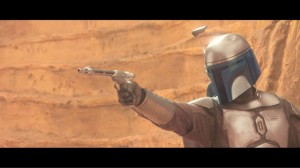 Read more
Read more
From the Chicago Reader (April 1, 2002). — J.R.
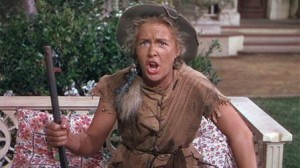
This was my favorite movie the year it came out (1950), when I was seven years old, and I’ve gone back to it repeatedly since — partly because of its swell Irving Berlin score, partly because of Betty Hutton’s gender-bending embodiment of Annie Oakley, and partly because the spirited vulgarity of director George Sidney often makes a perfect match with the tailored opulence and slickness of MGM musicals during that era. It still holds up as splashy fun of a sort, if you can handle its sexual politics and its depictions of Native Americans (including J. Carroll Naish as Annie’s benign father figure). With Keenan Wynn, Howard Keel as Frank Butler, and Louis Calhern as Buffalo Bill. 107 min. (JR)
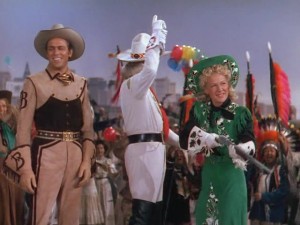
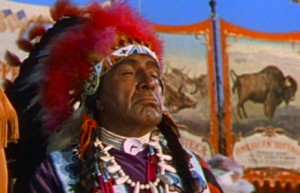
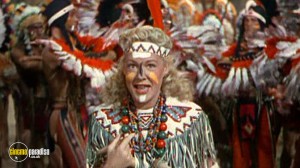 Read more
Read more
From the Chicago Reader (March 29, 2002). — J.R.


No Such Thing ** (Worth seeing)
Directed and written by Hal Hartley
With Sarah Polley, Robert John Burke, Helen Mirren, Baltasar Kormakur, Paul Lazar, Annika Peterson, and Julie Christie
The Sleepy Time Gal *** (A must-see)
Directed and written by Christopher Munch
With Jacqueline Bisset, Martha Plimpton, Nick Stahl, Amy Madigan, Frankie R. Faison, Carmen Zapata, Peggy Gormley, and Seymour Cassel.
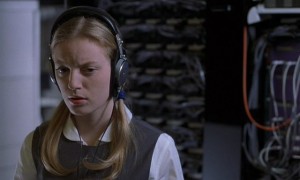

On March 29 two new American independent features of some importance will debut. Hal Hartley’s No Such Thing — not one of his best movies — will open at Pipers Alley, and Christopher Munch’s The Sleepy Time Gal, which I prefer, will premiere exclusively on the Sundance cable channel. Chances are, a lot more people will see the Munch film, though they’ll have to be subscribers to the Sundance Channel or have a friend who is.
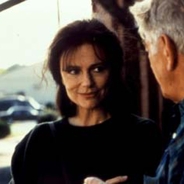
Considering these two films together is a breach of reviewing etiquette: movies that premiere in theaters are supposed to be in a different category than movies that premiere on TV. I first saw the Munch film, about a woman dying of cancer, last fall on video at the Vancouver International Film Festival, and I remember looking forward to seeing it on the big screen.
Read more
My Afterword to the second edition (paperback) of my 2004 collection Essential Cinema: On the Necessity of Film Canons. — J.R.
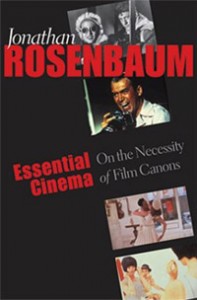
“Unwitting omissions —- films I’ll eventually hate myself for having overlooked — are inevitable,” I wrote in December 2003, introducing my list of 1,000 personal favorites, “largely because I haven’t come up with any sure-fire method of recalling or tabulating everything I’ve seen, or even everything I can remember seeing.” Even when I wrote this, I could scarcely imagine I’d omit a film as important as Chimes at Midnight (1966) from my list —- an oversight that illustrates my point all too well. No less vexing was the absence of Flaming Creatures(1963), a film celebrated elsewhere in the same book, and the silly blunder of renaming Crimson Gold (2003) Crimson Red — though at least I was able to correct these latter gaffes, as well as restore a missing accent to Tangos volés (2002), in the book’s second printing. (In the case of Flaming Creatures, this addition was managed ecologically by omitting The Disorderly Orderly [1964] from my list on the same page.)
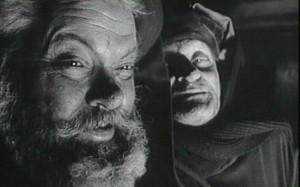
I discovered the omission of Chimes at Midnight later, from a blog, while cruising the Internet. Read more
Published by the web site Fandor on January 4, 2011. — J.R.

It’s widely and justly believed that the two greatest plays of Eugene O’Neill (1888-1953) were both written near the tail end of his career — The Iceman Cometh, completed in 1939 and first staged in 1946, and Long Day’s Journey into Night, completed in 1941 and produced only posthumously, in 1956. What’s less widely known is that the action of both plays unfolds during the same summer, 1912, when O’Neill was 24, after having attempted to commit suicide the previous spring. As his biographers Arthur and Barbara Gelb note in their 2000 O’Neill: Life with Monte Cristo (New York: Applause), “the plays follow almost literally the chronology of O’Neill’s youthful years, with Iceman (written first) set in ‘summer 1912’ and Long Day’s Journey (which can be regarded as its sequel) set on ‘a day in August, 1912’.”
Both late masterpieces are obsessive distillations of a lifetime of brooding, with the three-hour 1962 film version of Long Day’s Journey into Night directed by Sidney Lumet and the four-hour 1973 film version of The Iceman Cometh directed by John Frankenheimer having served, for many filmgoers, as the versions of reference. Read more
From the Chicago Reader (May 21, 2004). — J.R.
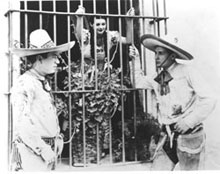
Directed by Fernando de Fuentes, this popular 1936 feature helped launch a new genre in Mexican movies, the comedia ranchera, which mixed comedy and music in rural settings. It tracks the long-term friendship between a ranch owner (Rene Cardona) and the orphan who becomes his foreman (Tito Guizar); both fall for the same woman (Esther Fernandez), a conflict that’s brought to a head by a kind of musical duel. This is more nuanced than one might expect in the handling of gender and class, and the populist fervor that’s become part of the period flavor is infectious. The graceful cinematography is by the great Gabriel Figueroa, best known for later collaborations with John Ford and Luis Buñuel. In Spanish with subtitles. 100 min. Read more
From the Chicago Reader (September 10, 2004). — J.R.

The surprising thing about George Lucas’s first feature (1971), a dystopian SF parable now digitally enhanced and expanded by five minutes, is how arty it seems compared to his later movies: off-center ‘Scope compositions reminiscent of Antonioni, striking white-on-white costumes and sets, a highly inventive sound track by cowriter Walter Murch. Yet the film is just as claustrophobic as Star Wars, and its ideas are equally shopworn, drawing on Orwell, Huxley, Kubrick, and Godard’s Alphaville. A young Robert Duvall plays the title drone, who escapes from a totalitarian society after he and fellow cipher Maggie McOmie discover sex. Lucas’s use of northern California locations is inventive; costar Donald Pleasence is mainly tiresome. R, 88 min. (JR)
 Read more
Read more
I am reprinting the entirety of my first and most ambitious book (Moving Places: A Life at the Movies, New York: Harper & Row, 1980) in its second edition (Berkeley: University of California Press, 1995) on this site in eleven installments. This is the seventh.
Note: The book can be purchased on Amazon here, and accessed online in its entirety here. — J.R.
II
Of married ones and single ones
And families and daters
There’s fun for all of you this week
At the Muscle Shoals Theatres!
“Three Stripes in the Sun” is the name of one
That’s playing the Shoals today
It concerns an Army sergeant
Better known as Aldo Ray.
“Blood Alley” refers to the Formosa Straits
A dangerous part of the ocean
Where Communists, storms and Lauren Bacall
Keep John Wayne in perpetual motion.
—from Stanley Rosenbaum’s Sunday column, Florence Times , January 8, 1956
Sometimes it wasn’t the movie at all but the configuration that went with it, or came out of it, or burned straight through it like a dropped cigarette—the static image summoned up by title, poster, billboard, newspaper ad, review, or some other form of promotion. Or maybe it was the false yet enduring and prevailing expectation. As Alvin said to me in Washington three months ago, Movies used to be the Rosenbaums’ Muzak —forever buzzing, blandly and gleefully, in the backs of our minds; and meanwhile adding up figures, busy as bees.
In some cases it might have been just a bit of ballyhoo that the theater manager devised, the real-life ads he staged, such as the giant robot from The Day The Earth Stood Still —or rather, a noble facsimile built by Bobby Stewart, the Shoals manager—patrolling the center of downtown Florence during the last shopping week before Christmas 1951, or the “moonshine still” that Aston (“Elk”) Elkins rigged up at the Colbert to push Thunder Road in 1958—a funny prank to play in a county where bootleggers and churches have joined forces to keep liquor illegal since 1952. Read more
I am reprinting the entirety of my first and most ambitious book (Moving Places: A Life at the Movies, New York: Harper & Row, 1980) in its second edition (Berkeley: University of California Press, 1995) on this site in eleven installments. This is the sixth.
Note: The book can be purchased on Amazon here, and accessed online in its entirety here. — J.R.
3—
If Looks Could Kill
. . . Can it be that everybody is looking for a way to fit in? If so, doesn’t that imply that nobody fits? Perhaps it is not possible to fit into American Life. American Life is a billboard; individual life in the U.S. includes something nameless that takes place in the weeds behind it.
—Harold Rosenberg
I
Mommy was away at Payne Whitney, a hospital in New York City, for the better part of a year, from the fall of 1953 through the summer of 1954. She went there after she had a nervous breakdown toward the end of summer, sometime after we drove back to Alabama from Indian and Forest Acres; she said she needed to get away from the house and four boys and Stanley for a while, and Bo offered to pay for Payne Whitney, where she hoped to get better. Read more
From the Chicago Reader (April 5, 2002). — J.R.
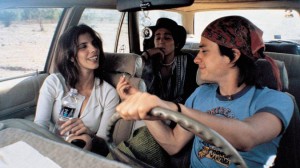
A genuine rarity: a sex comedy with brains. Even rarer, one with smart politics — so unobtrusive you may not notice — and wonderful acting. Writer-director Alfonso Cuaron — best known here for two Hollywood efforts, the enchanting A Little Princess and the less enchanting Great Expectations — went back to his native Mexico to put together this road movie about two 17-year-old boys from Mexico City, one privileged, the other working-class. On an impulse, they take off for a remote coastal beach with a 28-year-old married woman. It’s not difficult to understand why this movie has been a smash success in Mexico, especially with teenagers; few films deal with teenage hormones, Latin machismo, and the complexities of friendship in such a refreshing way. The movie keeps surprising you and stays with you long after it’s over. With Diego Luna, Gael Garcia Bernal, and Maribel Verdu. In Spanish with subtitles. 105 min. Century 12 and CineArts 6, Crown Village 18, Esquire, Landmark’s Century Centre, North Riverside.
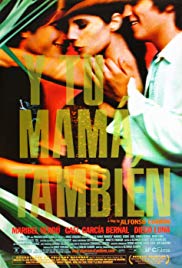 Read more
Read more
This was probably my first review of a James Cameron film, published in the August 11, 1989 issue of the Chicago Reader. It’s a review that helps to explain, in any case, some of the reasons why I dislike Avatar. — J.R.
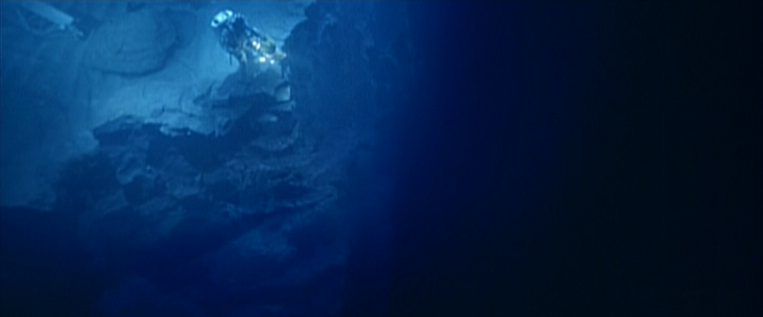
THE ABYSS
** (Worth seeing)
Directed and written by James Cameron
With Ed Harris, Mary Elizabeth Mastrantonio, Michael Biehn, John Bedford Lloyd, Leo Burmester, Todd Graff, and Kimberly Scott.
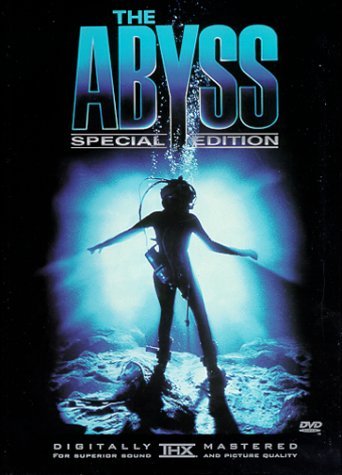
To satisfy these new cravings of human vanity, the arts have recourse to every species of imposture; and these devices sometimes go so far as to defeat their own purpose. Imitation diamonds are now made which may be easily mistaken for real ones; as soon as the art of fabricating false diamonds shall become so perfect that they cannot be distinguished from real ones, it is probable that both will be abandoned, and become mere pebbles again. — Alexis de Tocqueville, Democracy in America (1835)
I happened to see The Abyss with someone who only sees about three Hollywood movies a year. In a way it proved to be an appropriate choice for him, because it’s a veritable survey of big-budget Hollywood filmmaking in the 80s, as cannily up-to-date as the latest issue of Variety. Read more































